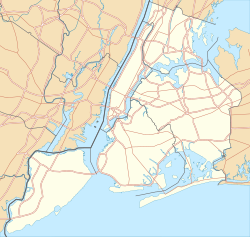| Flagstaff Fort | |
|---|---|
| Staten Island, New York | |
| Site information | |
| Type | Redoubt |
| Owner | National Park Service |
| Location | |
| Coordinates | 40°36′18″N74°03′24″W / 40.60500°N 74.05667°W |
| Site history | |
| Built | June 1776 |
| Built by | Patriot forces |
| In use | 1776-1783 |
| Demolished | Replaced by Fort Tompkins in 1806 |
| Battles/wars | American Revolutionary War |
| Garrison information | |
| Occupants | National Park Service |
A Patriot redoubt built in June 1776, located on Signal Hill at The Narrows on Staten Island. Site of an earlier 1663 blockhouse that stood until at least 1808, [1] preceded by one built by Dutch settler David Pieterszen de Vries in 1636 and destroyed in the Peach War of 1655. [2] Taken by the British in July 1776 and by July 1779 a redoubt with gun platforms for 26 cannon was built. Two months later, six 24-pounders and four 18-pounders were recorded on hand. In 1782 the fort had five bastions and several barbette batteries. Evacuated by the British in 1783 at the end of the Revolution. [1] In 1806 Flagstaff Fort was demolished and Fort Tompkins was built on the site, reportedly enclosing the 1663 blockhouse with red sandstone. [3] That fort along with others grew into Fort Wadsworth. [3] The site is now part of the Gateway National Recreation Area of the National Park Service.


